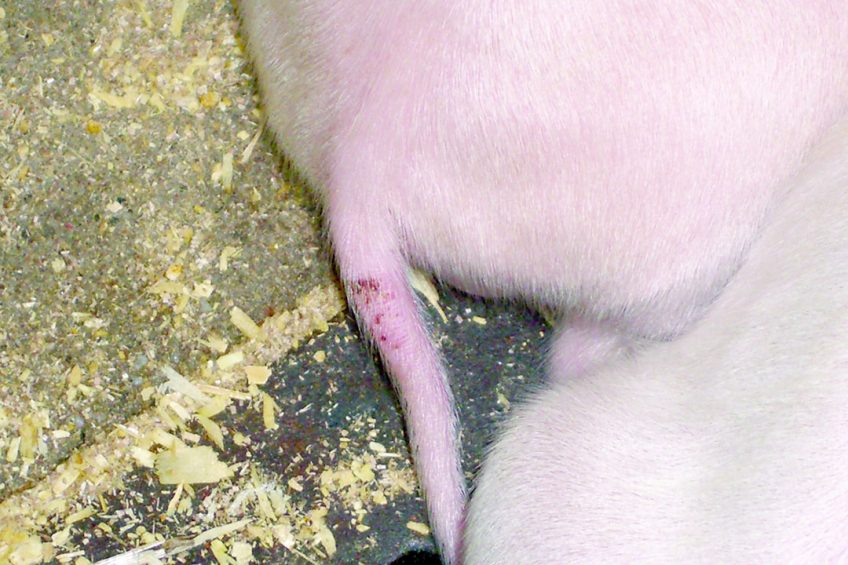6 reasons why toxin binders may not work

No swine producer in this world needs an explanation about the occurrence of mycotoxins in feed. Yet there’s a difference between knowing the challenge and choosing a proper solution. Here are 6 reasons why a chosen toxin binder may not work.
Awareness of the negative impacts of mycotoxins in feedstuffs on both pig health and profitability has increased significantly in recent years. Research has revealed the detrimental effect of mycotoxins on, among others, swine immunity or disease progression. Thanks to this level of awareness, every producer, from a farmer preparing feed on the farm to industrial feed mixing plants, uses some kind of product to minimise the impact on production results.
Toxin binders constitute the most conventional type of anti-mycotoxin product. Comprised of various adsorbents, they are added to swine feed in minute quantities in order to dispose of mycotoxins within a pig’s gastro-intestinal tract, thereby reducing harm to animals.
However, as many swine producers well know, there are instances where a mycotoxin adsorbent may not deliver the expected results. This article sums up 6 reasons why a binder may not work.
 Incorrect diagnosis, e.g. tail necrosis
Incorrect diagnosis, e.g. tail necrosis
Tail necrosis is a common swine affliction that occurs unpredictably and jeopardises performance. Tail necrosis appears in animals of all ages, from new born piglets to finishers.
Several mycotoxins are known to contribute to tail necrosis. Ergot alkaloids exert vasoconstriction effects leading to ischaemia and dry gangrene. From this, necrosis can develop in the ear, tail and hooves of piglets. Trichothecenes such as T-2 toxin or desoxynivalenol (DON) have been reported as a cause of tail necrosis, as is also shown on the picture.
Application of a proven mycotoxin deactivator may help alleviate the situation in some cases but not in others. Because differential diagnosis of tail necrosis can be tricky, other causes may be at work.
Certain nutritional deficiencies that cause dermatitis (zinc, group B vitamins, essential fatty oils) may also have a direct effect on tail necrosis. Insects can also be the culprit. A number of environmental factors can lead to tail necrosis including:
- Air humidity
- Inappropriate tail clipping management
- Not rinsing off strong (alkaline) disinfectants after use
- Small injuries from slatted or abrasive flooring
In these cases, it makes sense to review health status, pest control, feed formulation and management practices in order to address the issue.
Mycotoxin Knowledge Centre:
This interactive tool provides information on the impact on livestock health, an A-Z, plus regulations.
 Insufficient dosage based on sampling error
Insufficient dosage based on sampling error
The appropriate dosage level of a mycotoxin deactivator depends on the extent of mycotoxin contamination of the feed materials found. In some cases, applying 0.5kg of binder per metric tonne of feed is sufficient to cope with a mycotoxin contamination challenge.
Other times, the same dosage based on the same mycotoxin analysis results may be insufficient because the real contamination level is much higher. While modern methods such as LC-MS/MS and HPLC show mycotoxins contamination levels of feed materials sample with high accuracy, incorrect sampling can lead to non-representative results. In fact, nearly 80% of errors in determining the actual level of mycotoxin contamination come from sampling procedure mistakes. Figure 1 provides an overview of a proper sampling procedure.
Figure 1 – Sampling procedure for mycotoxin testing.

 Mismatch between challenge and solution
Mismatch between challenge and solution
More than 500 mycotoxins and metabolites have been characterised. Due to the frequency of occurrence and level of losses caused in animal production –
5 main groups of mycotoxins are distinguished:
- aflatoxins,
- ochratoxin A,
- zearalenone,
- trichothecenes and
- fumonisins.
The chemical structures of these mycotoxins are well-known. We also know that different strategies are needed to manage the challenge posed by these diverse chemical components. For polar and planar structures, like aflatoxin – binding (adsorption) based on Van der Waals and ionic bonds works well and even more than 90% of mycotoxins can be bound in this way using a scientifically proven binder. However, peer-reviewed scientific studies have shown binders to be ineffective in binding non-adsorbable mycotoxins such as trichothecenes (e.g. deoxynivalenol) or zearalenone, see also Figure 2.
Figure 2 – Binders are not effective against deoxynivalenol, T-2 toxin, etc.

Only one method is scientifically proven and registered in the EU for the mitigation of the risk posed by non-adsorbable mycotoxins: biotransformation. biotransformation uses enzymes to convert mycotoxins into non-toxic, environmentally-safe metabolites in the digestive tract of animals. The technology has been demonstrated to detoxify fumonisins, trichothecenes and zearalenone.
 Antinutritional factors
Antinutritional factors
Well-known antinutritional factors include saponins, tannins, protease inhibitors and phytic acid. Phytoestrogens, polyphenolic compounds produced by plants, are less well-known antinutritional factors that primarily occur in legumes such as soy, clover and alfalfa.
Phytoestrogens are structurally similar to oestrogen, the primary female sex hormone. Due to this similarity, phytoestrogens bind to oestrogen-receptors and therefore exert oestrogenic effects in animals. The mycotoxin zearalenone is also an oestrogenic substance and well-known for its detrimental effect on reproductive performance. Co-occurring phytoestrogens may aggravate the effect of zearalenone. If this is suspected to be an issue, producers can test feed for the presence of phytoestrogens using a validated LC-MS/MS method. If phytoestrogens are present, it may be prudent to adjust the inclusion rate or source of certain feed materials.

Managing Mycotoxins Special:Mitigating mycotoxins is a huge global challenge with no universal solution. Developments need to happen from all sides of the supply chain. Here, the latest breakthroughs are explored.
Improper mixing
Uniform distribution of an anti-mycotoxin additive in the ration is an important though often overlooked topic. While primarily a concern for home mixers, it is also relevant for feed mills and integrators. If there is 1kg of the product mixed in 1,000kg of feed, then uniform distribution is crucial – otherwise performance may fluctuate widely within a herd.
Many factors may influence the proper distribution of the feed additive in the ration and its availability for all animals such as the use of concentrated additives, the order of adding the raw materials to the mixer, the type of raw materials and their degree of fragmentation, as well as the time of mixing. Issues related to product distribution uniformity can be addressed by regularly checking your feed for homogeneity.
6. Poor quality components
With hundreds of toxin binder products available on the market, producers have nearly unlimited choice. Examples of binder materials include silicates, clays, yeast and charcoal. Some materials are better at binding than others.
Bentonites, clay minerals which result from the decomposition of volcanic ash consisting mainly of the phyllosilicate mineral montmorillonite (smectite), have received EU authorisation for the deactivation of aflatoxin B1 (AfB1) in animal feed. Activated charcoal represents a very unspecific binder, meaning that it also adsorbs nutrients – so producers are essentially paying to reduce feed quality. Producers are advised to carefully select a binder that is backed by scientific results and demonstrated success in the field.
A mycotoxin sampling guide can be found on the Biomin website.











